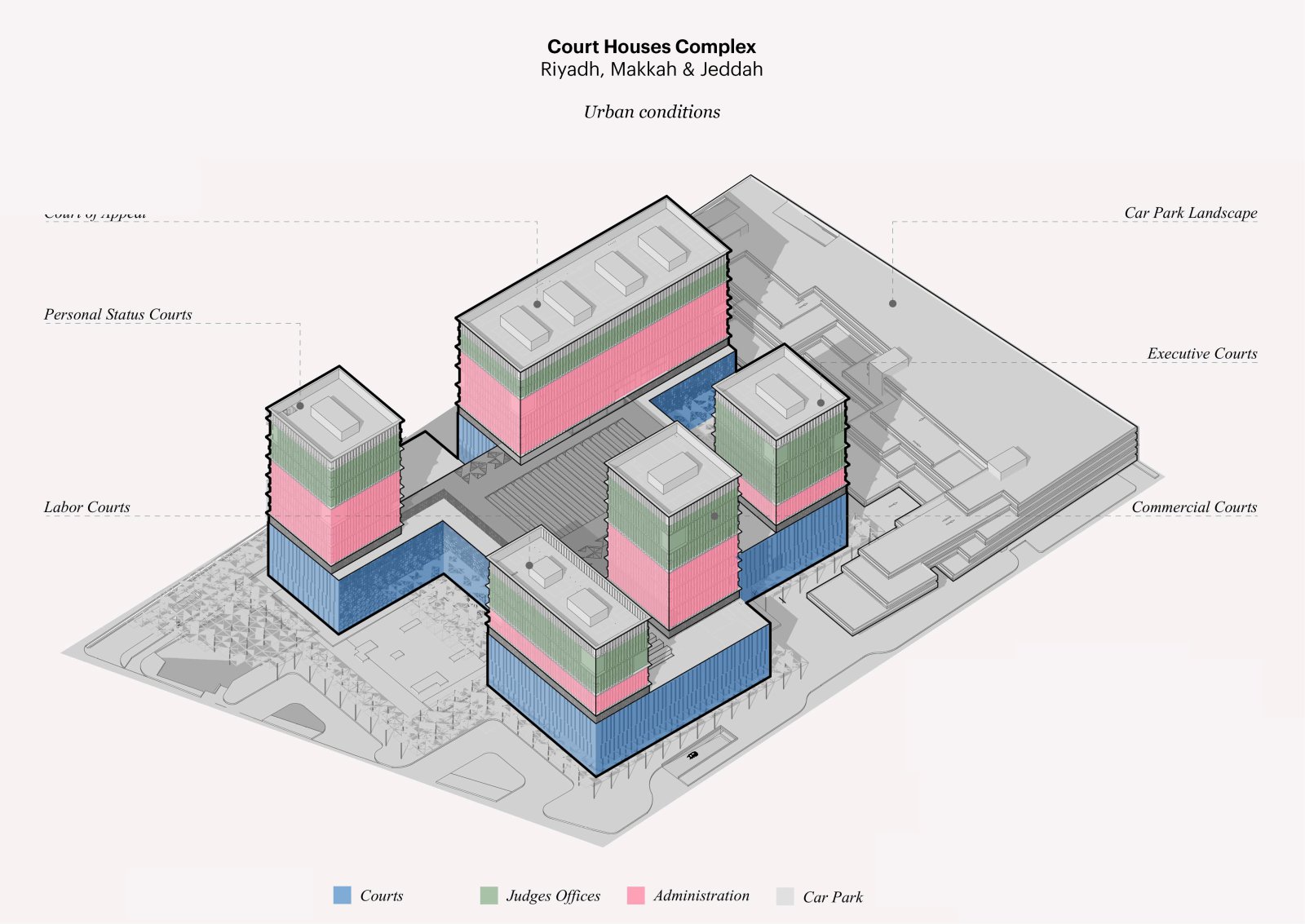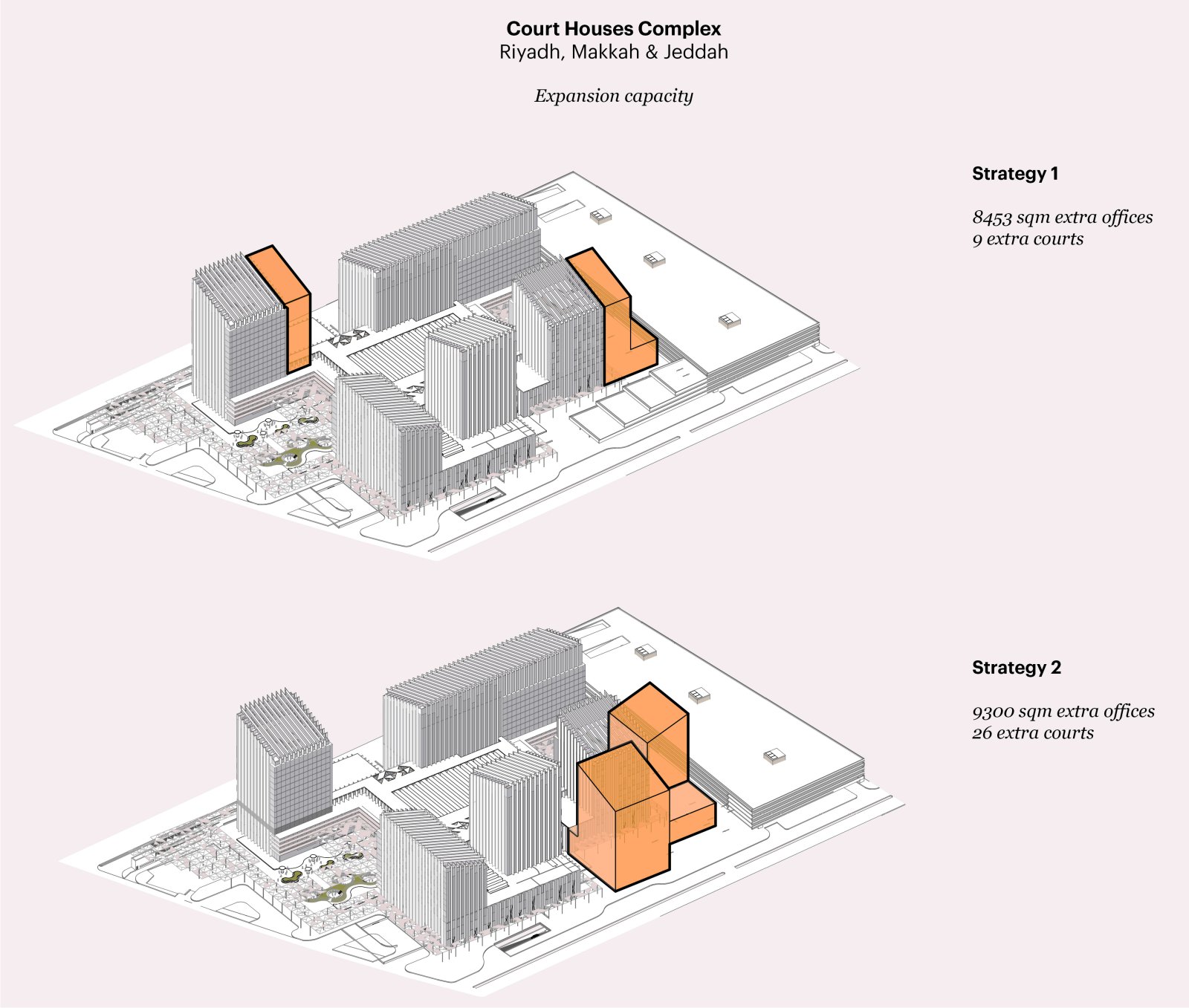Justice is crucial for the success of any society, a social tool that confers security and helps to foster its social cohesion. We envisage the court complex as a place that celebrates justice and its values for the public.
The Court House complex of Jeddah, Makkah and Riyadh is comprised of five main courts: Personnel Status Court, Labour Court, Executive Court, Court of Appeal and the Commercial Court. The courthouse at its very heart is a civic space, a safeguard for the public.

It was very important that the project displays this civic importance despite its complex program, creating multiple visual connections for an easy-to-use building. The project is comprised of series of connecting towers on a podium, rather than one monolithic city block.
The podium contains all the public program; thereby creating the perception from afar of a protective layer – one where the rule of law governs society, using, therefore, communal values as a driver to shape the urban space.

The large podium, allows users to move between the various courts with ease, as they are connected by an extensive ground floor lobby that opens onto the upper level, a great public space as civic backbone. The heart of the project is its public nature, and so the complex is planned as a sequence of plazas, reinforcing its public quality.
To enter the building users may do so from the main entry plaza, an external welcoming space facing the city whilst opening to the central atrium, the public lobby on ground floor lit form a skylight.

On the other hand, the towers contain the private judicial and administration spaces, with a much more intimate scale, creating working places with a neighbourhood character, as a court building must be a welcoming facility. Vertical circulation is provided in the lobby and in the arteries via escalators closer to individual courts.
The circulations of the public, judicial staff and prisoners are, therefore, separated and different. The scale and materiality of the court complex builds on the area’s historical references: earthy materials, lush gardens, terraced buildings and minimal aesthetics.

With a holistic approach toward the built environment whilst promoting authenticity by combining tradition with contemporary parameters, as these historical references help to foster a sense of ownership between the citizenry and the complex.
The complex is designed so that the podium is both transparent and solid at the same time. The transparency helps foster a belief in the public justice system; and the solidity helps to display strength and resilience. Source by AGi architects.

- Location: Riyadh, Makkah & Jeddah, Saudi Arabia
- Architect: AGi architects
- Main Architects: Joaquín Pérez-Goicoechea
- Design Team: Pablo López, Nasser B. Abulhasan, Irene García, Marta Lozano, Antonio Villodres
- Images: The VIZ Design Company, Courtesy of AGi architects





